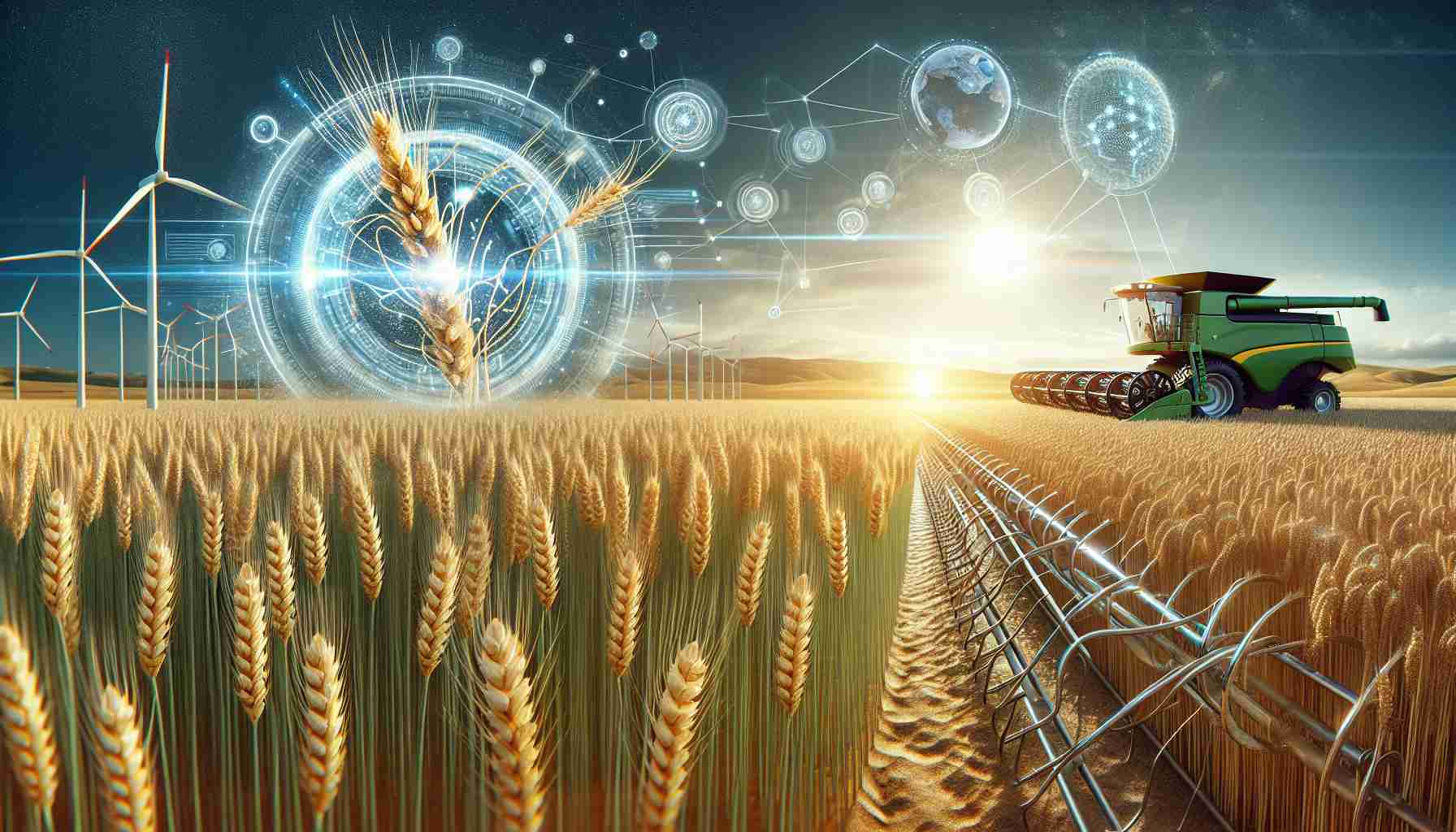Innovative agricultural techniques are revolutionizing the way we cultivate crops, with a particular focus on enhancing the productivity of staple foods like wheat. Leveraging the power of gene-editing, scientists are finetuning plant genomes to upsurge crop yields without introducing foreign DNA, distinguishing this method from traditional genetic modification—which adds new genetic material to create genetically modified organisms (GMOs).
This nuanced approach to crop enhancement is perceived as safer and more akin to age-old breeding techniques by regulators and experts in the agricultural domain. With gene-editing, precision is key, allowing for multiple genetic alterations to be made simultaneously.
In a groundbreaking initiative, InterGrain, an Australian seed company, is spearheading a large-scale trial of gene-edited wheat, following the importation of seeds from American agri-tech pioneer, Inari. Looking to push the agricultural envelope, InterGrain aspires to bolster wheat yields by at least 10 percent, with trials being conducted in Queensland greenhouses. By 2025, this project may result in a selection of seeds being sown across the nation.
Thanks to the artificial intelligence (AI) tools and CRISPR gene-editing technology employed by Inari, progress in plant breeding is expected to accelerate exponentially, outpacing traditional methods by a significant margin. The ultimate goal combines tackling food security issues, climate change mitigation, and bolstering farm profitability.
There’s an ongoing effort to ensure that the gene-edited wheat meets international export standards. With countries like the U.S. and Japan already leaning towards equating gene-editing with traditional breeding practices, the future for gene-edited wheat appears promising. In parallel, efforts such as Inari’s pursuit of a superior, gene-edited soybean cultivar continue to shape the future of sustainable agriculture.
Key Questions:
1. How does gene-editing in wheat differ from traditional GMO techniques?
Gene-editing allows for precise modifications to the existing genetic makeup of an organism without introducing foreign DNA. Traditional GMO techniques often involve the addition of new genetic material from different species, which can raise concerns about ecological impact and long-term safety.
2. What are the potential benefits of gene-edited wheat for farmers and consumers?
Farmers could see increased yields and improved resilience to pests, diseases, and environmental stressors, leading to higher profitability and productivity. Consumers might benefit from more nutritious wheat varieties and a stable supply due to crop improvements.
3. What are the regulatory and public acceptance challenges facing gene-edited wheat?
Regulation of gene-edited crops varies widely by country, with some treating them the same as GMOs and others more leniently. Public acceptance is also mixed, with concerns about safety, environmental impact, and corporate control over the food supply.
4. How is AI and CRISPR technology impacting the rate of development in plant breeding?
AI and CRISPR technology are significantly accelerating the rate of development in plant breeding by enabling scientists to analyze massive datasets to predict genetic outcomes and create precise genetic alterations quickly.
Key Challenges and Controversies:
– Regulatory hurdles: Different countries have varying regulations regarding gene-edited crops, which can lead to trade barriers and affect market access.
– Ethical concerns: There is an ongoing debate regarding the manipulation of genetic material and its ethical implications.
– Public perception: Consumers are often skeptical about the safety of new food technologies, including gene-editing.
– Environmental impact: The long-term effects on ecosystems are not fully understood, and there is a concern over unintended consequences.
Advantages:
– Increased efficiency: Gene-editing allows for the rapid development of crop varieties compared to traditional breeding methods.
– Enhanced crop traits: Improved resistance to pests and diseases, drought tolerance, and nutrient content are possible.
– Sustainability: Potentially reduces the need for pesticides and other chemicals, and improves resilience to climate change.
Disadvantages:
– Cost: Developing gene-edited crops can be expensive. The associated costs might exclude small-scale farmers from benefiting.
– Intellectual property issues: Concerns over patenting gene-edited crops may limit access and control of seeds by farmers.
– Unpredictable ecological reactions: There could be unforeseen effects on biodiversity and ecosystem balance.
For additional information about ongoing developments in the field of agriculture and gene-editing, the following trustworthy resources can be considered:
– Food and Agriculture Organization of the United Nations
– Nature
– ScienceDaily
– CRISPR-Cas
Each link provided redirects to the main domain, ensuring the most general and updated repository of information regarding these topics.
The source of the article is from the blog tvbzorg.com

